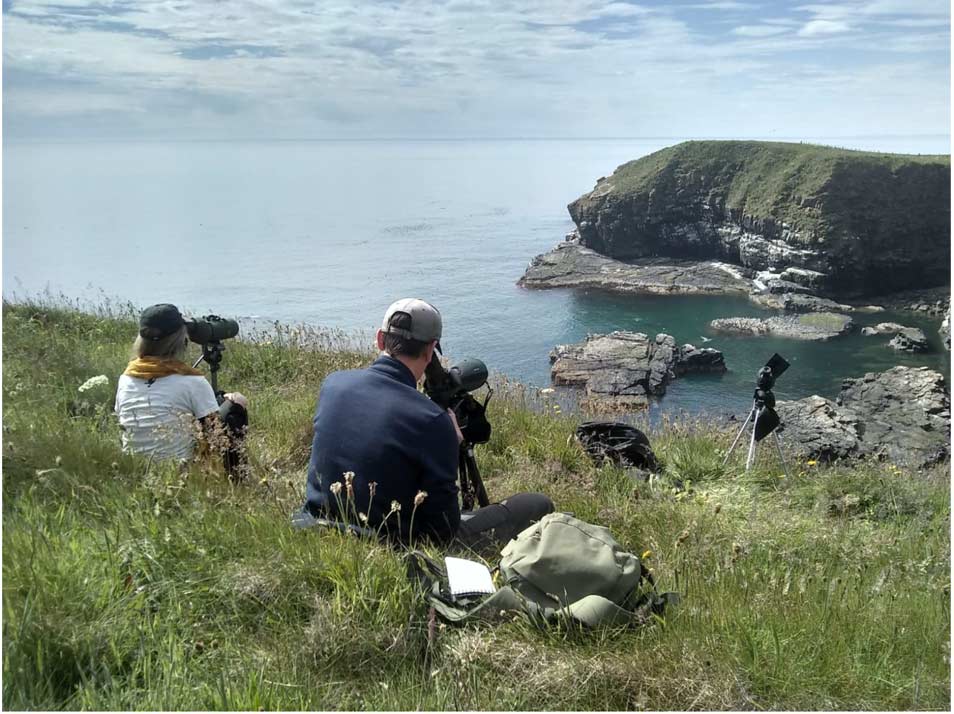Offshore wind energy - sectoral marine plan: seabird tagging feasibility
How to undertake a seabird tagging study for species and colonies potentially impacted by the sectoral marine plan for offshore wind energy
Key considerations in identifying field sites
In planning a tagging study at a new site, there are a number of logistical and practical considerations that must be accounted for.
In terms of accessibility, it is important to identify the closest suitable parking area for vehicles, and note any restrictions associated with this. Given the potential need to transport substantial volumes of equipment to the tagging site, any special requirements for accessing this site (e.g. 4 wheel drive, a long hike, or boat) should be noted, alongside any restrictions related to the tidal cycle. Local stakeholders, including landowners and ringing groups, should also be identified, especially where site access will involve crossing privately owned land. Landowners may also be able to recommend alternative locations to park vehicles, allowing easier access to tagging sites. Given the potential for long, tiring days in the field, the closest settlements, and potential options for accommodation should also be highlighted.
It is also important to capture details of the site itself, as this will inform health and safety risk assessments, options for capturing birds, considerations in relation to tag types and data retrieval, and whether any additional permissions (e.g. Schedule 1) may be required. From a health and safety perspective, it is important to note the type of site (e.g. grass slope, sheer cliff, boulder field) and the type of substrate present (e.g. loose rocks, slippery grass, algae covered rocks) to highlight the potential for injury as a result of tripping or falling. It is also important to note whether there are any special considerations in relation to site access, e.g. the need for rope access, which may require special training prior to the fieldwork.
Identifying where birds are nesting is also important as this will inform whether they are accessible using a noose pole, or other standard methodology, or whether an alternative means of capturing the birds will be necessary. It is also important to determine whether it is possible to get a direct line of sight to the nest sites, both for the purposes of monitoring device effects (Figure 34), and also data retrieval, if using a remote download base station.
It is important to identify which species are present at the site, both in terms of the focal species of interest for tagging, and any other protected species which may be present, particularly raptors, or other Schedule 1 species. This should include identifying any particularly dense concentrations of birds, how many birds it may be feasible to catch at any site, and what methods may be most effective for doing so. Where archival devices are used, the potential for recapturing any birds should also be highlighted.
It is also important to consider what size of team may be suitable for each site. This is likely to be influenced, at least in part, by the availability of areas away from the main colony both to fit the tags and, to give the colony a break from any disturbance (e.g. whilst eating lunch).

Contact
Email: ScotMER@gov.scot
There is a problem
Thanks for your feedback